There’s something magical about watching a windmill’s massive arms slice through the air, turning grain into flour just like they did centuries ago. These towering giants represent a time when wind power meant survival, not just sustainability. While many historic windmills have been converted into museums or restaurants, plenty still grind grain and pump water using nothing but Mother Nature’s breath.
From the tulip fields of Holland to the rolling plains of Kansas, working windmills continue their ancient dance with the wind. Here is a list of 15 working windmills you can visit today.
De Gooyer Windmill
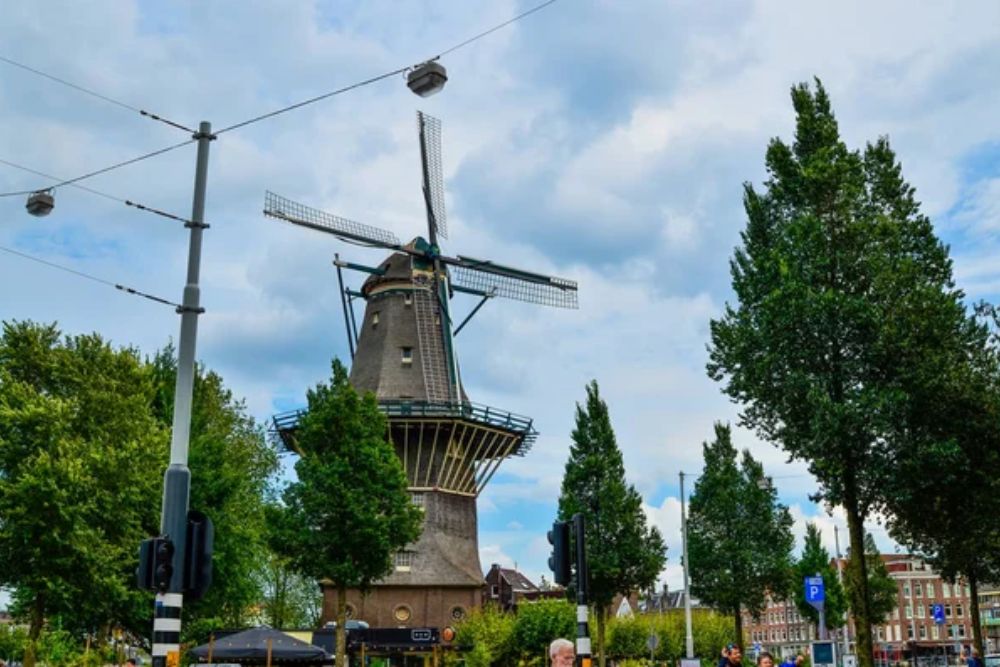
Amsterdam’s De Gooyer windmill stands tall in the city’s eastern district, grinding grain just as it has since 1725. This octagonal beauty reaches 85 feet into the Dutch sky, making it one of the tallest wooden windmills still operating in the Netherlands.
The mill produces organic flour that locals can purchase directly from the miller. What makes this windmill extra special is its location next to Brouwerij ‘t IJ, a craft brewery housed in a former bathhouse, creating an interesting blend of old and new Dutch traditions.
Fabyan Windmill
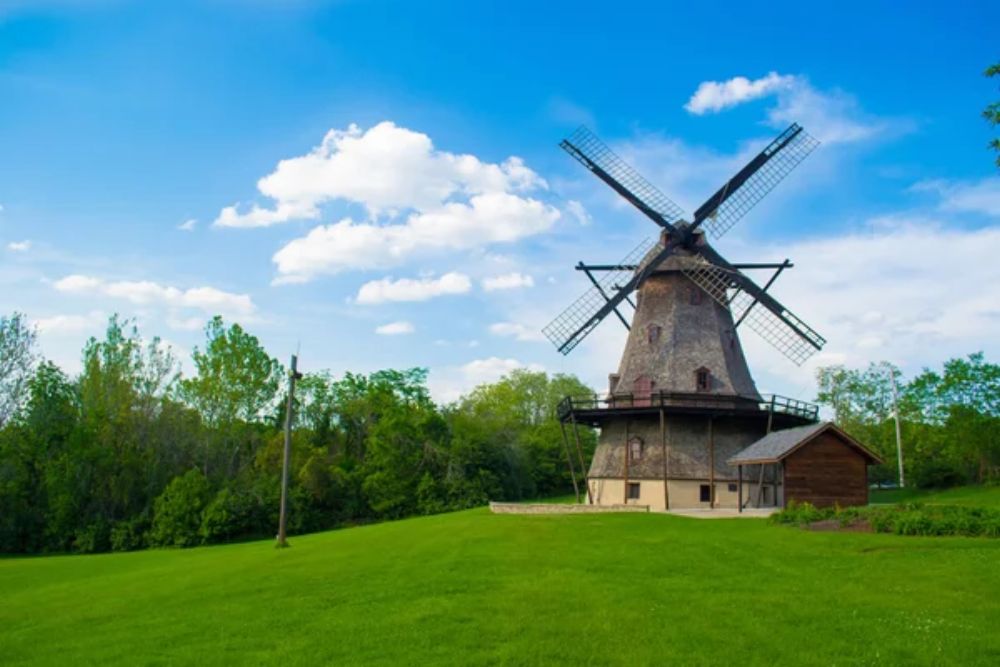
Located in Geneva, Illinois, the Fabyan Windmill brings a slice of Dutch engineering to the American Midwest. This authentic Dutch windmill was dismantled piece by piece in the Netherlands, shipped across the Atlantic, and reconstructed in 1915.
The five-story structure still grinds corn and wheat using traditional stone grinding methods. Visitors can tour the mill on weekends and watch the massive gears turn while learning about the intricate process of wind-powered milling.
Like Travel Pug’s content? Follow us on MSN.
Kinderdijk Mills

The Kinderdijk complex in the Netherlands features 19 working windmills that have been pumping water from the polders since 1740. These mills work together as a massive drainage system, preventing the low-lying land from flooding. Eight of these mills still operate regularly, moving water from lower to higher ground through a series of canals and reservoirs.
The entire site showcases how Dutch engineering conquered geography, turning marshland into fertile farmland through pure wind power.
Old Mill
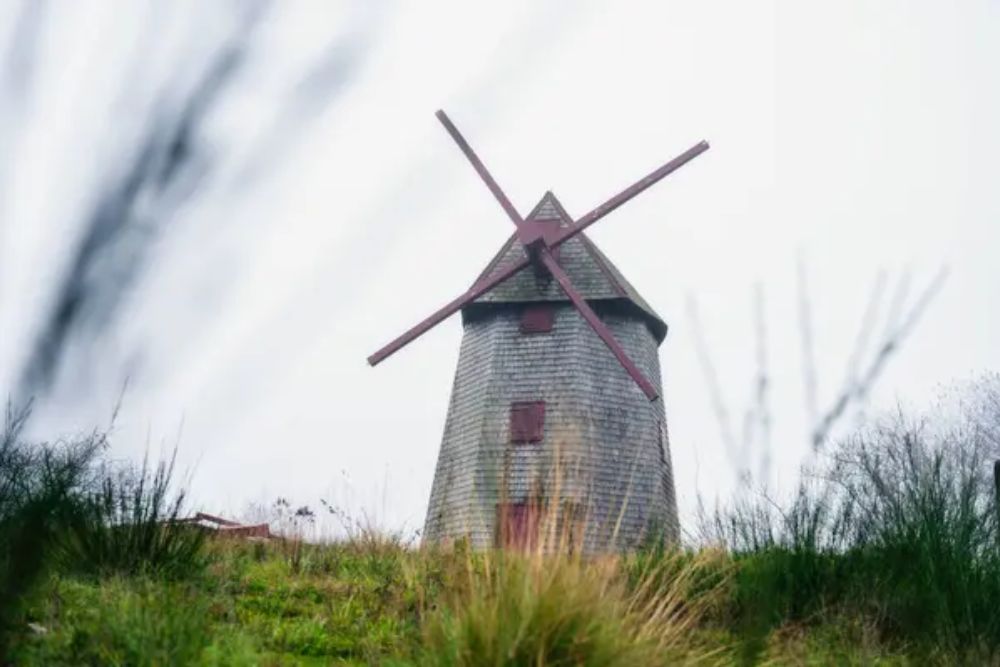
Nantucket’s Old Mill has been grinding corn since 1746, making it one of the oldest working windmills in America. The mill sits on a hill overlooking the historic whaling town, its weathered wooden frame telling stories of centuries past. During summer months, visitors can watch the massive millstones crush corn kernels into meal, just as Nantucket’s early settlers did.
The mill’s octagonal shape and hand-split oak frame represent classic New England craftsmanship that has withstood countless Atlantic storms.
Windmill Island Gardens
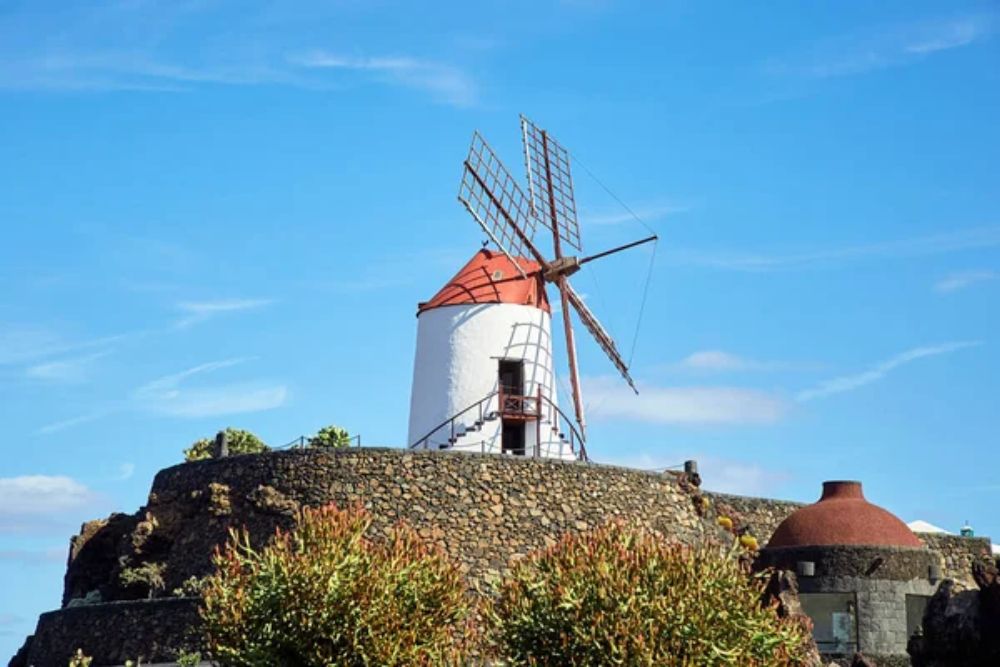
Holland, Michigan’s Windmill Island Gardens features an authentic 250-year-old Dutch windmill called De Zwaan, which still produces flour for visitors to purchase. This towering structure was the last commercially operating windmill in the Netherlands before being relocated to Michigan in 1964. The mill grounds wheat, rye, and buckwheat using traditional stone grinding techniques.
Surrounded by tulip gardens and Dutch architecture, De Zwaan creates an authentic Holland experience right in the heart of America.
Like Travel Pug’s content? Follow us on MSN.
Murphy Windmill
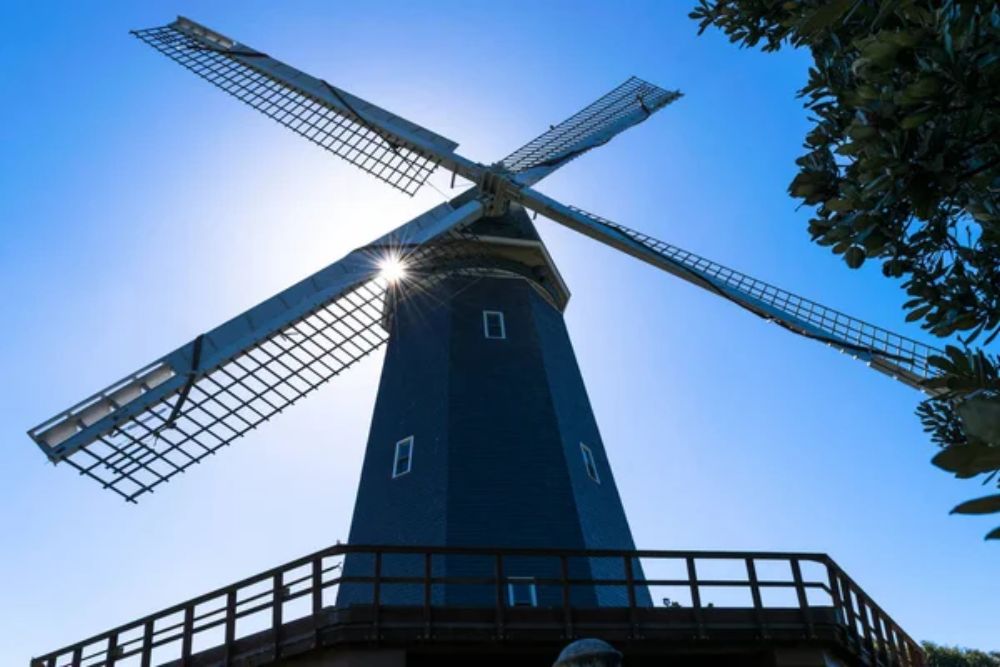
San Francisco’s Murphy Windmill in Golden Gate Park represents California’s unique approach to wind power, originally built in 1905 to irrigate the park’s western section. This Dutch-style windmill pumps water from underground wells to supply the park’s extensive gardens and green spaces.
After decades of disrepair, the mill was fully restored and returned to operation in 2012. The 95-foot structure now serves both practical and educational purposes, demonstrating sustainable water management in an urban environment.
Sanssouci Windmill
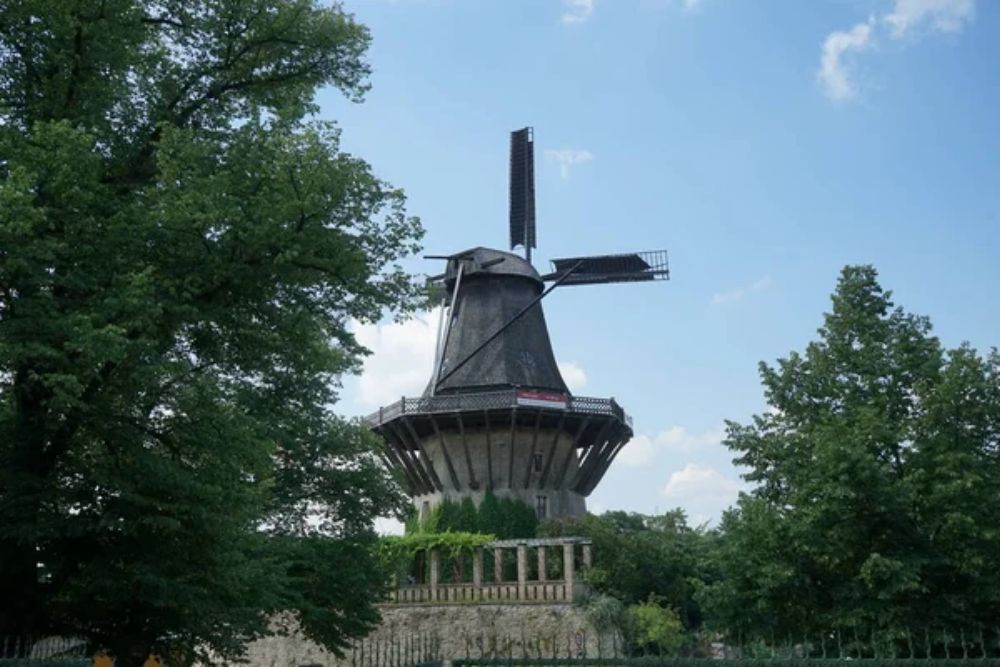
Potsdam, Germany’s historic windmill at Sanssouci Palace continues grinding grain within sight of Frederick the Great’s former residence. Built in 1787, this tower mill represents German engineering excellence from the late 18th century.
The mill operates several days each week, producing flour using traditional methods while serving as a living museum of milling technology. Its location within the UNESCO World Heritage Site makes it one of the most prestigious working mills in Europe.
Peirce Mill

Washington, D.C.’s Peirce Mill in Rock Creek Park offers visitors a chance to see 19th-century American milling in action. This gristmill, built around 1820, uses water power rather than wind, but represents the same tradition of sustainable grain processing.
The mill produces cornmeal and whole wheat flour using massive millstones quarried in France. Park rangers demonstrate the milling process on weekends, showing how wheat transforms from grain to flour through centuries-old techniques.
Like Travel Pug’s content? Follow us on MSN.
Prallsville Mills
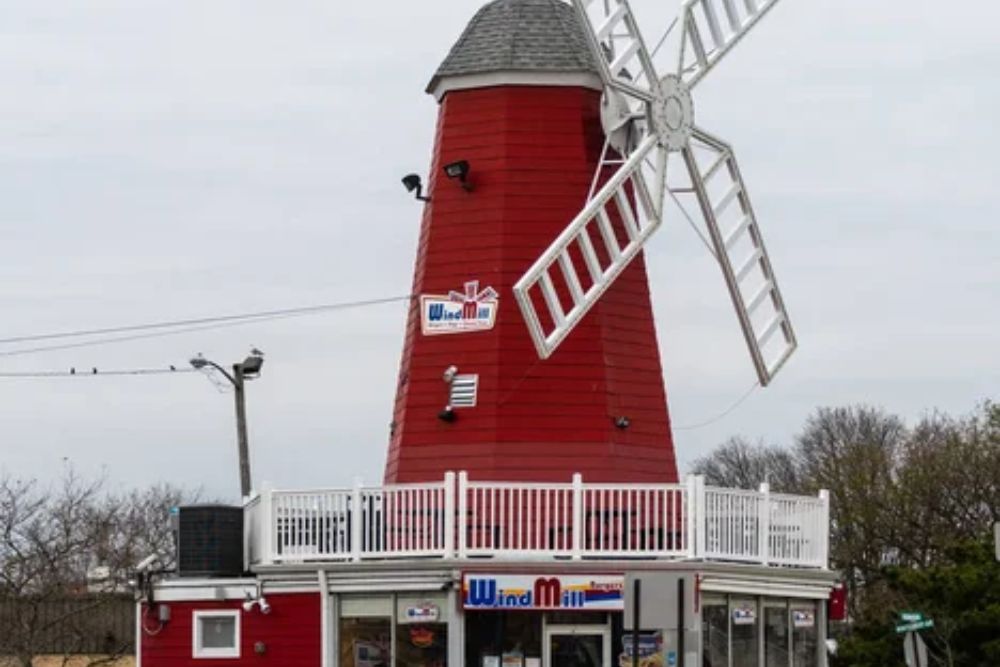
New Jersey’s Prallsville Mills along the Delaware River continues the tradition of water-powered grain processing that began in the 1700s. This historic mill complex played a vital role in supplying flour to surrounding communities throughout the 18th and 19th centuries.
The mill operates using water from the Delaware and Raritan Canal, channeled through a carefully maintained millrace system. Modern visitors can watch the restoration process and learn about the mill’s connection to early American commerce and transportation.
Robertson’s Windmill

Located in Williamsburg, Virginia, Robertson’s Windmill represents colonial American wind technology at its finest. This post mill, reconstructed based on 18th-century designs, demonstrates how early American settlers adapted European windmill technology to New World conditions.
The entire mill structure rotates to face the wind, an engineering marvel that required no modern technology. Costumed interpreters operate the mill regularly, grinding corn and wheat using methods that fed colonial Virginia.
Zaanse Schans
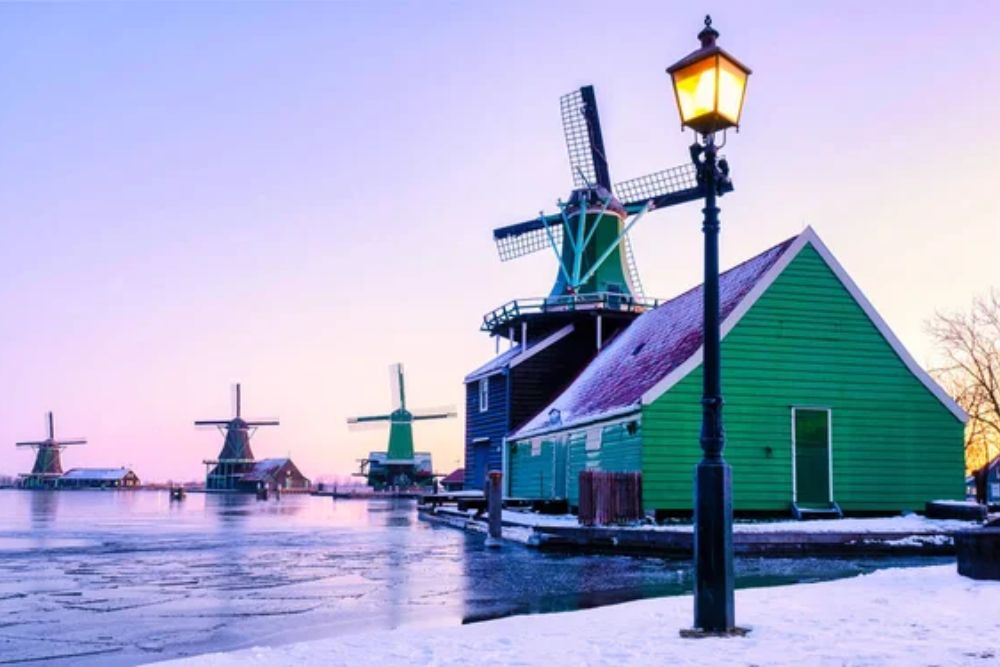
The Zaanse Schans district near Amsterdam features multiple working windmills that produce everything from paint pigments to peanut oil. These mills represent different aspects of traditional Dutch industry, including sawmills, oil mills, and spice mills.
Visitors can watch craftsmen operate these 17th and 18th-century machines, creating products using techniques passed down through generations. The complex demonstrates how windmills powered entire communities, not just individual farms.
Like Travel Pug’s content? Follow us on MSN.
Slater Mill
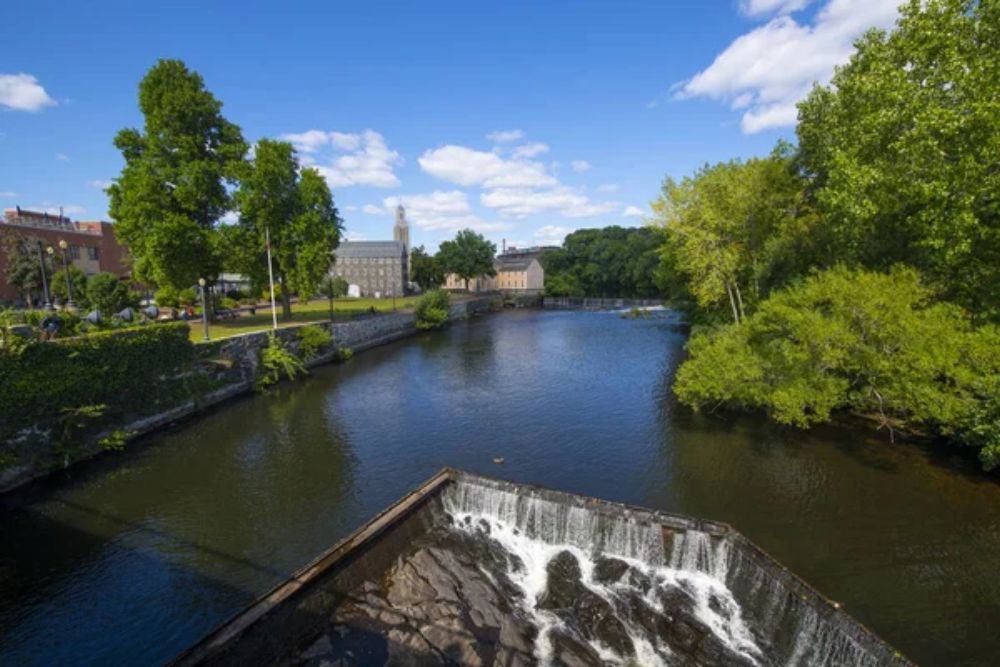
Pawtucket, Rhode Island’s Slater Mill complex includes a working mill that helped launch America’s Industrial Revolution. While primarily water-powered, the site demonstrates the transition from traditional milling to mechanized production.
The mill produces textiles using 19th-century machinery, showing how American manufacturing evolved from European traditions. Visitors can observe the entire production process, from raw cotton to finished cloth.
Windmill at Golden Gate Park
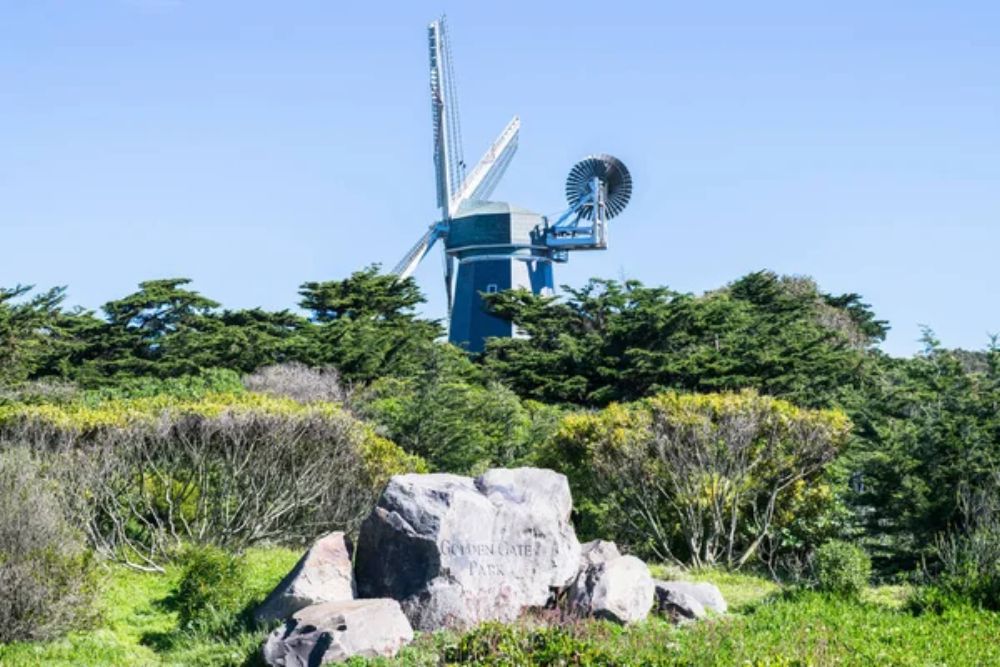
San Francisco’s Dutch Windmill, separate from the Murphy Windmill, continues pumping water for Golden Gate Park’s western gardens. Built in 1903, this structure represents California’s early adoption of sustainable water management technology.
The mill’s 102-foot height makes it visible from Ocean Beach, creating a distinctive landmark at the continent’s edge. Recent restoration efforts have returned the mill to full operation, demonstrating how historic technology can address modern environmental challenges.
Historic Bowens Mills
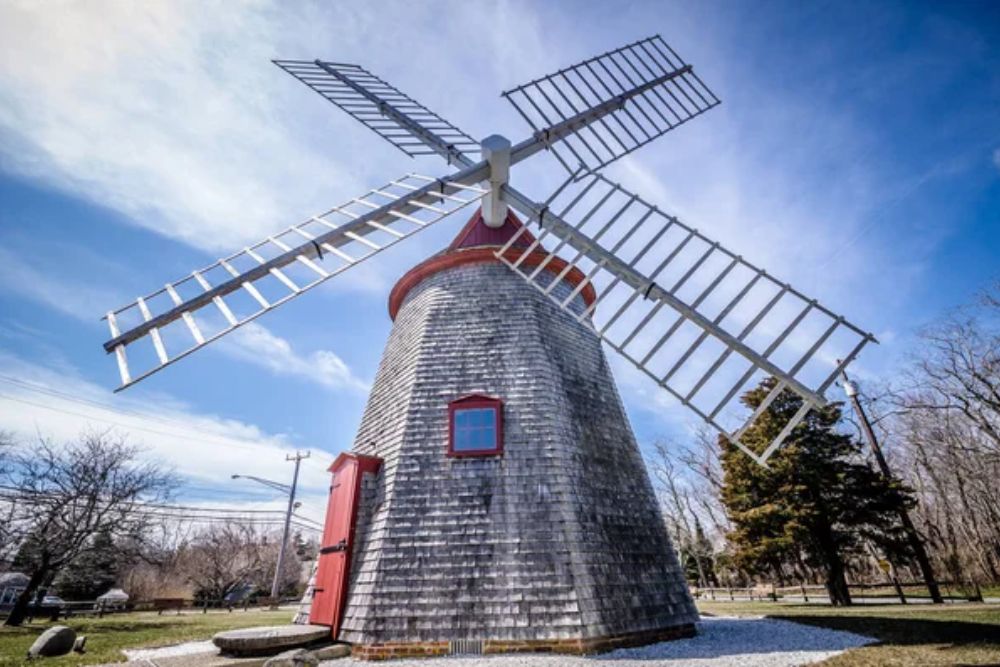
Located in Whitinsville, Massachusetts, Historic Bowens Mills represents New England’s rich milling heritage dating back to 1810. This water-powered gristmill continues grinding grain using traditional millstones and wooden gears powered by the Mumford River.
The mill produces cornmeal and whole wheat flour that visitors can purchase while touring the facility. Its location in the heart of the Blackstone River Valley showcases how water power drove American industrial development during the early republic.
Like Travel Pug’s content? Follow us on MSN.
Cedar Creek Grist Mill
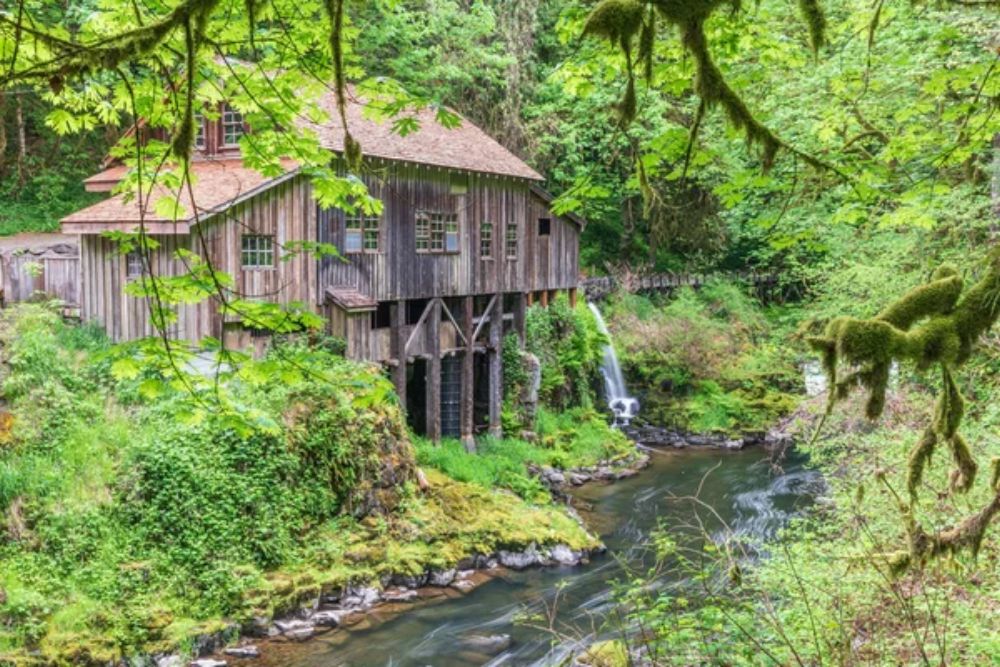
Washington’s Cedar Creek Grist Mill in Woodland demonstrates frontier milling technology that served Pacific Northwest settlers. This water-powered mill, built in 1876, continues grinding grain using massive French millstones and wooden machinery crafted by local craftsmen.
The mill operates during special events and demonstrations, producing flour and cornmeal using traditional methods. Visitors are immersed in the sights, sounds, and rhythms of 19th-century grain milling life while learning about pioneer life in the Washington Territory.
Where Old Meets New
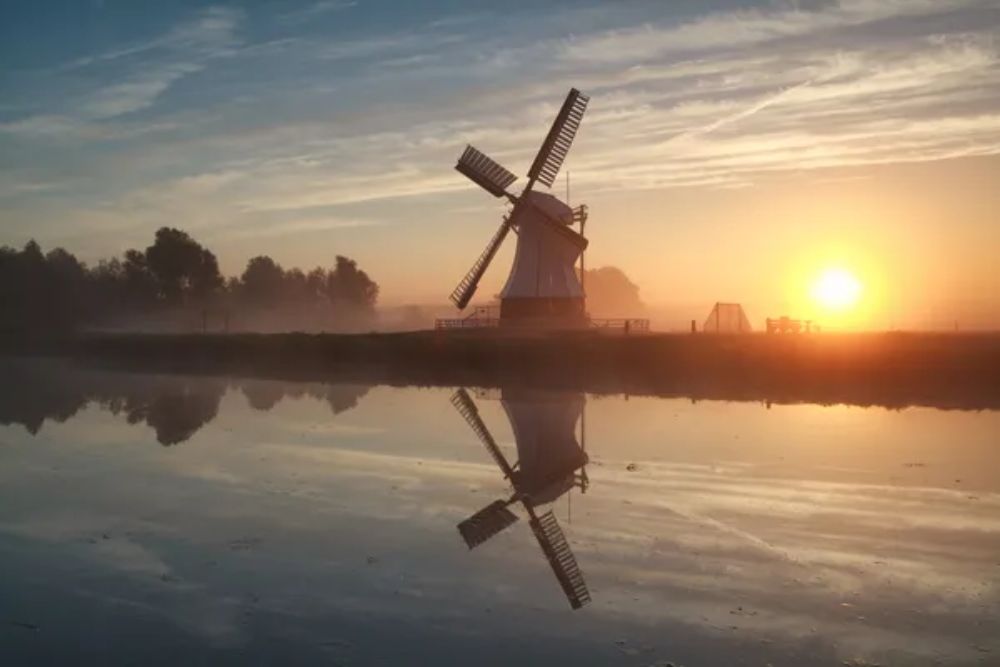
These working windmills prove that good engineering never goes out of style. From Amsterdam’s busy streets to California’s coastal parks, these structures continue serving their communities while connecting us to simpler times.
They remind us that before electricity and fossil fuels, people solved problems using nothing but ingenuity and natural forces. Today’s renewable energy movement draws inspiration from these patient giants, showing that sustainability isn’t just trendy—it’s timeless.
More from Travel Pug

- 20 Best Beach Towns in the Carolinas
- 13 Destinations Where Tourists Regularly Regret Their Trip
- 20 Things You Actually Get in First Class
- 20 Small Airports With Aviation Museums
- 20 Places in the U.S. That Are Perfect for a Reset Trip
Like Travel Pug’s content? Follow us on MSN.
